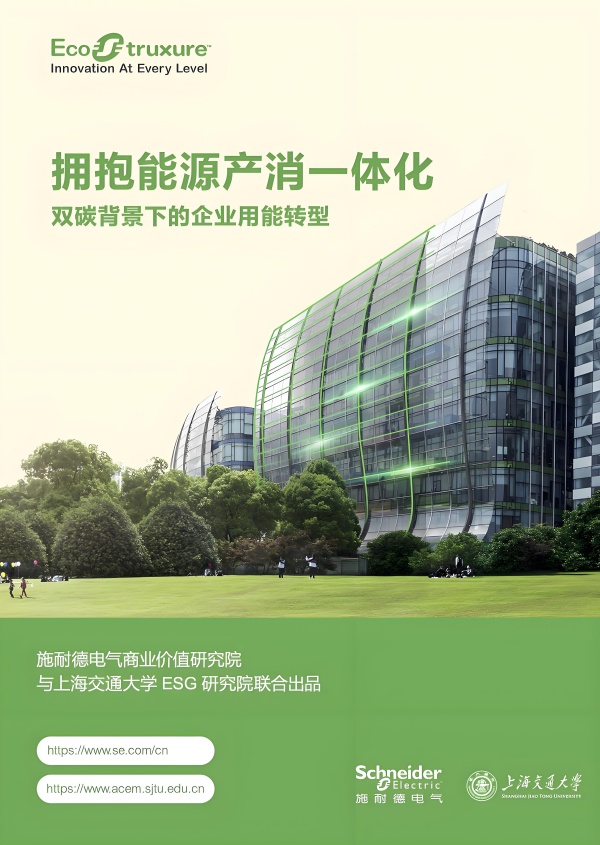Energy Production-Consumption Integration: An Inevitable Trend in China's Energy Transformation
On November 6th, at the 7th China International Import Expo (CIIE), multinational electrical giant Schneider Electric officially released a report titled "Embracing Energy Production-Consumption Integration: Corporate Energy Transformation under Dual Carbon Goals" in collaboration with Shanghai Jiao Tong University's ESG Research Institute. The report emphasizes that "production-consumption

On November 6th, at the 7th China International Import Expo (CIIE), multinational electrical giant Schneider Electric officially released a report titled "Embracing Energy Production-Consumption Integration: Corporate Energy Transformation under Dual Carbon Goals" in collaboration with Shanghai Jiao Tong University's ESG Research Institute. The report emphasizes that "production-consumption integration" is becoming essential for Chinese energy enterprises' transition.
According to the report, China's energy transformation is expanding from focusing solely on the supply side to a broader consideration of consumption. Energy-consuming enterprises are evolving from being mere consumers to entities capable of producing and consuming their own energy. They are also participating in electricity markets and interacting with power grids, aiming to achieve both self-sufficiency and efficient utilization.
Yin Haitao, Executive Dean of Shanghai Jiao Tong University’s ESG Research Institute and Professor at Antai College of Economics & Management, stated that this transformation will play a crucial role in China's low-carbon transition. On one hand, energy-saving renovations and renewable substitutions by these enterprises can directly reduce fossil fuel consumption. On the other hand, their digital operational capabilities will enhance grid flexibility and renewable absorption capacity.
Despite the growing adoption of "production-consumption integration," challenges remain in terms of electricity safety, costs, and renewable absorption capabilities. The report highlights that microgrids, which incorporate local renewables, storage systems, load devices, and energy management systems, will become indispensable infrastructure for these enterprises within the new power system framework.
This report is based on extensive research involving 116 key industry scenarios, aiming to guide energy-consuming companies towards more effective pathways for achieving the transformative changes necessary to accelerate the dual carbon goals.